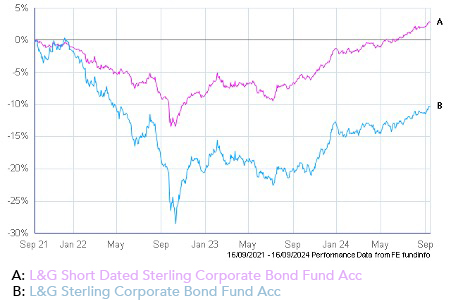It has been the subject of much debate over the decades – just who is ‘The Best Bond’? When it comes to 007, we all have our favourite interpretation of that iconic role, From Sean Connery’s cool 60’s style and Roger Moore’s safari suit with 70’s flares… right up to Daniel Craig’s brilliant reboot of the modern Bond.
It’s fair to say that each actor who has donned the famous dinner jacket has brought something different to the role, but imagine if you could incorporate them all together. In investment terms, that’s exactly what we do when building our clients’ portfolios. However, unlike 007, investment bonds are often the unsung hero of a balanced investment portfolio. Many think shares are a vital component of a portfolio, but bonds also have a role to play.
Bonds as investments
What is a Bond?
A bond, in its simplest form, is a type of fixed-income investment in which you lend money to a government or company for a specified period at an agreed-upon interest rate. In return, the issuer—whether a government or corporation—makes regular interest payments over the bond’s term and repays the original face value upon maturity.
Bonds are commonly issued by companies, local authorities (or state governments in the U.S.), and, most notably, central banks of sovereign governments, such as the Bank of England or the U.S. Treasury. These institutions use bonds to raise funds for various projects and operations. When you purchase a bond, you essentially become a creditor of the issuer. Bond terms specify the repayment date, or maturity, as well as the interest payments due to the bondholder throughout the term.
How safe are Bonds?
The security of a bond is closely tied to the financial strength of the issuing company or government. For instance, bonds issued by the U.S. or U.K. governments are considered extremely safe. However, when purchasing a bond from a company, the level of risk depends on that company’s financial strength, often assessed through its credit rating.
Credit ratings for governments and companies are provided by agencies such as Standard & Poor’s. They indicate the issuer’s ability to repay its debts. Bonds with the highest credit ratings are known as “investment grade” and are typically issued by financially reliable governments or stable companies. Investment-grade bond ratings range from AAA (the highest rating) to AA, A, and down to BBB representing the lowest tier of investment-grade bonds.
Bonds rated below investment grade have a rating of BB or lower and are known as “high-yield” bonds. These bonds carry a higher risk of default (meaning if the company gets into financial difficulty). However, to offset this risk, investors are generally offered higher interest payments.
A well-diversified portfolio will typically hold a wide selection of investment grade bonds, both Corporate and Government and exposure to High Yield. High-yield bonds, if included at all, are often minimal to limit risk while still seeking opportunities for higher returns.
What happens when interest rates go up or down?
Bond prices are inversely correlated with interest rates, meaning when interest rates go up, bond prices fall, and vice-versa. If the Bond has a long time to go until maturity, it will be more sensitive to interest rate movements, whereas a Bond due to mature in the near future will be much less sensitive.
This is illustrated in the graphic comparison below, which shows the effect on Bonds since late 2021 when we saw a sharp rise from low interest rates to high interest rates – but with the more recent expectation that rates should now be on a downward path.
Short-Dated vs Long Dated
The blue line below shows what happened in the (longer-dated) UK Corporate Bond Index over the last 3 years; the pink line shows the performance of the Short-Dated Corporate Bond Index (less than 5 years to maturity).
Longer-dated Bonds felt the impact of the interest rate hikes of 2022 much more than their short-dated cousins. The latter fell by around 12% but has since recovered and made gains; the former fell by as much as 28% (partly in the panic over Liz Truss’s discredited budget on October 22) and has since recovered around half of that figure.
Outlook for Bonds – positive for portfolios going forward
For much of the time from the beginning of 2022 to late 2023 – with the shock of the Ukraine conflict and rampant inflation, we have seen Bonds have a more challenging time due to the rapid interest rate hikes which followed.
As inflation has come under control, and the first central bank rate cuts have started to filter through, the last year has been more positive. We believe Bonds are well placed to continue their recovery in anticipation of further rate cuts to follow.
Our portfolios – not shaken, but stirred for recovery
You’ll be pleased to know that our Model portfolios, run in conjunction with our investment partner Copia, are well-positioned to benefit from a continued easing in interest rates going forward. We still hold a good deal in shorter-dated bonds as these offer continued value and yield, but may look to increase the holdings in longer-dated bonds when appropriate.
As always if you have any concerns or would like to discuss your portfolio, do get in touch with one of our independent financial advisers.
Please be aware that the value of investments linked to the stock market may rise or fall depending on market conditions and that you may not always recoup your initial investment. Past performance should not be seen as an indication of future returns.
The concepts and suggestions in this article must not be viewed as advice. As always we recommend you approach a financial adviser who will take your circumstances into full consideration before providing advice.
